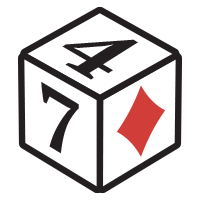Uri Peleg: Hey everyone, this is Uri and Owen. I'm not great at flashy introductions, but hopefully you guys already know Owen — champion of the CoinPoker Cash Game World Championship, and legitimately one of the best 6-max and heads-up players in the world right now.
We're going to break down some hands from GGPoker. It’s Owen’s first time seeing them, but I know the results. We’ll talk strategy, theory, and also share a project we're working on. Hope you enjoy.
Hand #1
Uri: So this hand starts with a raise to $50. You do cold-call here sometimes.
Owen: Yeah. I used to simplify and never call — mostly because I hadn’t studied the spot — but lately I play it more.

Uri: Makes sense. Meta has evolved. Back when almost nobody knew anything, simplifying was strong because most players mis-played wildly. But now with solver tools everywhere, if everyone else is simplifying, studying the spot gives you a huge edge.
Owen: And there’s that “unseen edge” too. If you flat this spot a lot, you just have reps they don’t. Even if they studied it once, they don’t feel it like you do. That intuition compounds over time.
Uri: Exactly. And cold-calling also reshapes your 3-bet range. When you do 3-bet, your range is structured and you understand it better than the field. But I’d say nobody needs to worry about this stuff until they're playing $5k+ games.
The BB calls. Flop:
Flop checks around, villain bets $50. Pocket fives here — I’d mostly call, sometimes raise. Thoughts?

Owen: Middle player means we need more traps. If we raise too much middle, the player behind can attack us. So I'd mix, but lean toward trapping more often multiway.
Uri: Yep. In heads-up, pure check-raise. But three-way, we slow-play more because the third player "auto-raises" some hands and protects us. Here we go big when we check-raise to $425 — our range is sets, maybe . We're just building stacks.
Villain calls. Turn:
We're betting $790. River — jam spot. Thoughts?
Owen: Yeah, no real decision tree. If I'm beat, I'm beat. Take my money.
Uri: The button goes all-in, we call. What do you expect to see from villain? Ever expect a bluff?

Owen: Against a recreational? Very rarely a bluff here. They don’t slow-play polar hands in rainbow pots — they jam weird stuff instead.
Uri: Judging by the hand, the button is an amateur. On a rainbow board, there's no point in such a quick play.
Owen: Yep. They sometimes fast-play things like or weird two-pair hands because they don't think about range protection — they just want to “lock in” the pot. And sometimes they just panic-jam to avoid “getting bluffed” later. It’s not over-valuing — it’s emotional logic: “He has it so I’ll get it in now.”
Uri: Perfectly said. Against a reg, you fold , tank call , snap call . Against a recreational, you give wider weight to random punts.
Owen: Yes.
River:
Uri: Which showdown will surprise you the most?
Owen: Aces. Although if it's an amateur...

Uri: Yes, there are aces there.
Owen: Ha ha! A quick top set on a rainbow board – wow!
Uri: They think about the game differently. They want to show who's boss.
Owen: And I think on a rainbow board they can't come up with bluffs for their opponent with a flush draw, so they think they've got a cooler, set for set, and they need to get it in before some card comes along that kills the action. And that's a lifesaver for a pro who was about to commit his stack with .
Hand #2 – Aces
Uri: Okay, so next hand. This time we have aces, we three-bet. We have a call-call from a non-full stack, so clearly recreational villain does this. So four-bet on the way to big size. And you know this guy is the recreational who cold-called the three-bet.
Owen: Yeah, I think I just always call to try and keep the rec in here.

Uri: That’s interesting. You know, I always have this dilemma because I feel like if I always call, yes, the rec might come in, but also the reg knows my hand — because what’s your calling range?
Owen: Well, I mean, would you rip here? It’s UTG versus UTG+1, or like, I don’t know, hijack versus lowjack, whatever. Even though there’s the weird dynamic with the cold-caller, it’s not like you’re super excited to get ace-king in from these positions.
Uri: Yeah, but can you flat ace-king? Like, I wouldn’t mind folding it.
Owen: Is jamming any less face-up?
Uri: I think so. I think when they put you on , yeah — versus this big four-bet, maybe it’s just like… it’s so weird when you flat. I’ve had hands like this in the past where someone flatted against me for like half his stack — and his stack is 70 big blinds — and I’m like, I know you have , right?
Owen: Yeah. I mean, I think it would just depend on how big a recreational this is. If you think that the only way the rec ever gets away from jacks here is by you ripping it in, then you should just go post. But if he only makes small mistakes and still never calls with or , then we may not slowplay. Hopefully this is like a mega whale or he doesn’t come along.
Hero calls, button folds.
Uri: Yeah, we’re getting all the worst outcomes.
Flop ($1,620):
Opponent bets $160, 10% of the pot. We always call.
Owen: Always calling. Weirdly, this is the one way you can actually stack . You’re not getting the stack from ace-king on the king-high board 100% of the time, as you said, if the guy’s very switched on — but I guess they just tripled off ace-king into us.
Turn ($1,940):
Opponent bets $540, Hero calls.

River ($3,020):

Opponent goes all-in for $1,102. Hero calls and wins. .
Uri: I personally feel like a lot of guys are too trap-happy with recs, where they’re like, “Let’s leave the guy in the pot,” and there’s always this balance between leaving the guy in versus playing against the reg.
Owen: Yeah. What I didn’t register was how big the four-bet was — because it’s almost 5x, right? In that scenario, our call is incredibly obvious, of course. So yeah, and I was thinking like, well, if it’s a more reasonable size four-bet you can actually flat, then I could see it. But yeah, when it’s 5x, that’s actually quite a unique scenario where the flat is honestly very face-up.

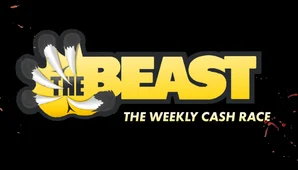
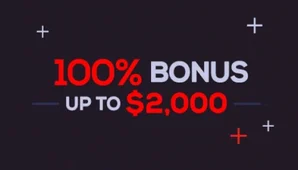
Hand #3
Uri: So here we call a three-bet. Check, check. Turn is the ten. I guess mostly blast this, sometimes check this.
Owen: Yeah, I mean usually these boards in like BTN vs BB pots are pretty good for the caller. are the nuts, but is close — and especially when they miss, top pairs are pretty vulnerable. You’re doing really well at the top end of the range.
And then it’s also, you know, it’s full rainbow, there’s no flush draw. So you’ve got to be pretty aggressive with the draws you do have. A lot of things make me want to just pile a bunch of money in. But you could do some check-raising — this hand could also check-call as well. It’s kind of got everything on the table.
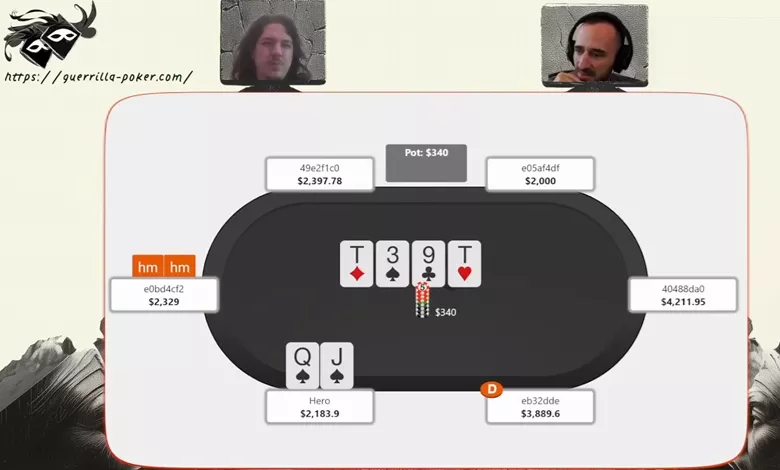
Hero checks, Villain bets $255, we check-raise to $720. Villain calls.
Uri: And is this a spot where this is like the busted flush draw? So you give this up, but you fire your gutshots, right? Like his folding range is centered around having , or how?
Owen: Not really though, because he doesn’t have offsuit preflop — he’s only going to have suited. So if he has for a backdoor flush draw on the flop, it’s going to be a very high-frequency c-bet. So you’re not actually blocking any combos with this hand.
You’re blocking, like, I mean, they can have some offsuit combos from preflop, I guess. You’re blocking trips well with two spades.

Oftentimes when you have an open-ender, it really sucks because you’re blocking their missed open-ender. But here, I don’t think that’s the case. So I think it’s actually fine to go take this, and then yeah, you block the trips.
It’s not an absolutely amazing spot though because the river is basically a hard brick and you do have plenty of misses. So you’re going to have to show a bit of discipline here.
Uri: So you’d throw in give-ups like or ?
Owen: Yeah, I’d be more inclined when I’m not blocking the suited to give up. Also depends how wide you think you can go for value in these spots based on how they’re c-betting — because you might be able to go wider than a on the turn, and you can have check-raises as wide as or something, and then you can start blasting even harder.
We go all-in, there's a call with .

Owen: Well, it happens. But I have no problem with this bluff. You can do it based on the randomizer, or based on your opponent. But you definitely shouldn't always give up.
Uri: Did both of you play the hand well?
Owen: Yeah. Kudos to the BB for the disciplined check on the flop with weak top pair.
Hand #4
Uri: So here we flat a four-bet. Looks like an easier one, but I could see this getting hard.He shoves — we call.
Villain continuation bets, we call.

On the turn , he shoves, we call.
Uri: Which bluffs would you expect to see here?
Owen: Well, I mean, usually in four-bet pots you have to find some stuff that’s a bit more exotic, but there’s so much on this board.
Uri: So, just all the flush draws, basically.

Owen: Well, I think you have to get a bit more than that. Probably have to throw in a few like combos or something, which kind of feels so bad when it’s so easy for in-position to call here. Also, there might be some mergers that I could imagine out-of-position just ripping — to get in-position to fold and , or call a .
Uri: Would it shock me if that was a thing? I wouldn’t have called a .
Owen: Yeah, it feels quite hard to fold a Ten here. Like, I mean, when they play this fast-play thing and they’re playing against your draws… I mean, board pairs — board pairs just have so much equity, or, like, so much equity relative to pocket pairs by virtue of having redraws.
The opponent shows , the river is blank.
Uri: So, well played by both again.

Owen: Yeah, seems pretty good. I mean, Ace-Eight could have four-bet pre.
Uri: Don’t be a nit.
Hand #5
Uri: Okay, so we have a bet-call.
Flop:
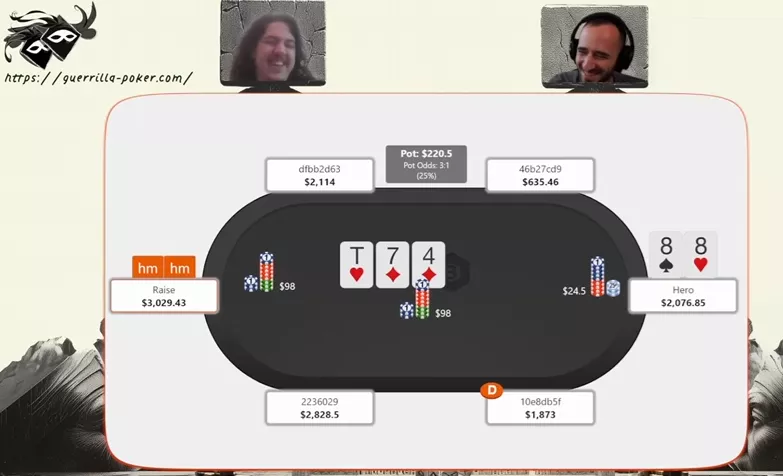
Turn , call a turn, river .
Owen: Oh, this is too easy.
Uri: Shove. Let’s think about what we bluff-shove here. So feels like the natural one, right? Seven-Eight suited.
Owen: Yeah. I mean, I don’t think it’s too much better than any though, just because they never have , they never have . So it’s important to have a or a in your hand, but I think blocking the is sort of a nice unblocker — to have an in your hand. You’re not going to block any bluffs, but I don’t think that’s doing better than like or .

Uri: You fold them on the turn though, right? Because you don’t have them offsuit.
Owen: Oh, yeah. I think — yeah. No, you can’t have it with the .
Uri: Yeah. This is one of the cool nuances about range reading — where if you’re on the button and the guy does this, you have so many bluffs to choose from, right?
And then on the board pair, I guess shoving or would be a bit spewy, right? Could you shove the nut flush?
Owen: I guess. Yeah, I guess maybe you could. I mean, it kind of feels like it’s probably the sort of thing where if you’re not shoving the nut bluff, then what’s the point of them ever putting a boat in this size, you know? Like, they’re kind of just doing it to hopefully get paid.
You put in this size and then the only hand they ever shove is — it’s like a bit of a trap.
Opponent calls with .
Uri: I guess he called down because he thought we could have the barreling on him, right? Like , , , — that adds up to a lot of combos.
Owen: Actually, you’ve got tons of bluffs here. You’ve got every with a kicker — and like down to suited if you’re being wide.
Hand #6
Uri: So, call a three-bet, rainbow board . Just call, and see the turn.
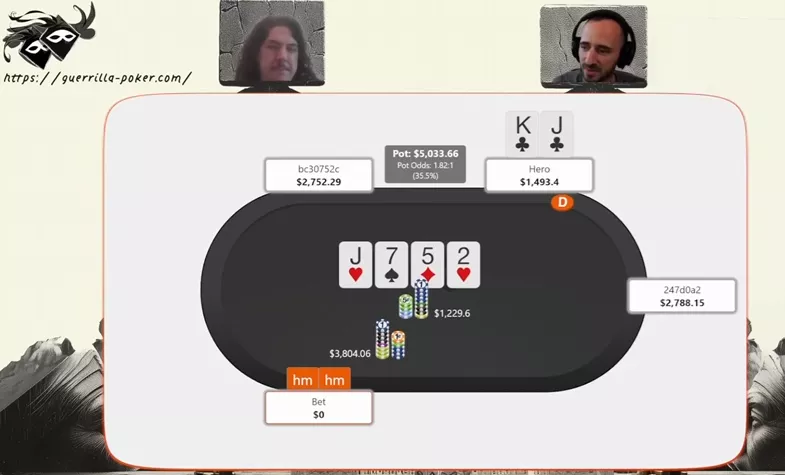
Turn:
Uri: I mean, we’re getting layups basically. Bluffs I would expect to see in practice — I think you could see, I guess, just something that turned hearts. Like, I wouldn’t expect anything too spewy to show up. Like .
Owen: Yeah, I mean, this is kind of why you’re not supposed to go all-in in this spot — there isn’t enough equity on both sides. You’re not really denying tons of equity here.
Uri: Yeah. It’s a weird spot, right? Like, this feels like the guy messed up his theory in a way.
Owen: It’s like they went the big flop size to set up a turn shove, and then they didn’t realize that that’s a thing for some turns, but not all of them. Like, when you get a you can play three streets, but the big flop size is giving you the option to play two streets if the turn is a lot more connected than this.
Uri: Okay, so — soul-reading time. Given the guy messed up the sizing, I always say, you know, if the guy goes the wrong theory sizing, the sizing is connected to his hand in some way, right? So, does he have , or does he have ? Which one?
Owen: I kind of feel like they just had the draw on the flop. I kind of feel like it’s . You know, if we’re getting really deep into it — sorry, there’s a chance that they find this flop size up because they have a hand which can two-barrel bluff.

Villian shoves turn, Hero calls.
River:
Villian shows
Owen: Oh, that’ll do it.
Uri: I’m surprised. I was sure we were going to see a bluff as well.
Owen: I definitely wasn’t sure we were seeing a bluff, but I was like, if I have to call out one hand, yeah, then it felt right—but unfortunately though, it’s a weird one.
Uri: This is a really weird hand. I don't even know what kind of note to give this guy. Something like "Super-fast value play on dry boards"?
Owen: Saying this might just be the guy not getting some of the nuances. I think it’s less likely to be a conscious decision and more that they’re missing a bit of the nuance. I wouldn’t really blame someone for missing this at $10/$20—that you can actually play over three streets here—because on really similar boards you’re still going to two-street. Like, if the board’s and the turn brings a flush draw, you still two-street the top pair/top kicker.



